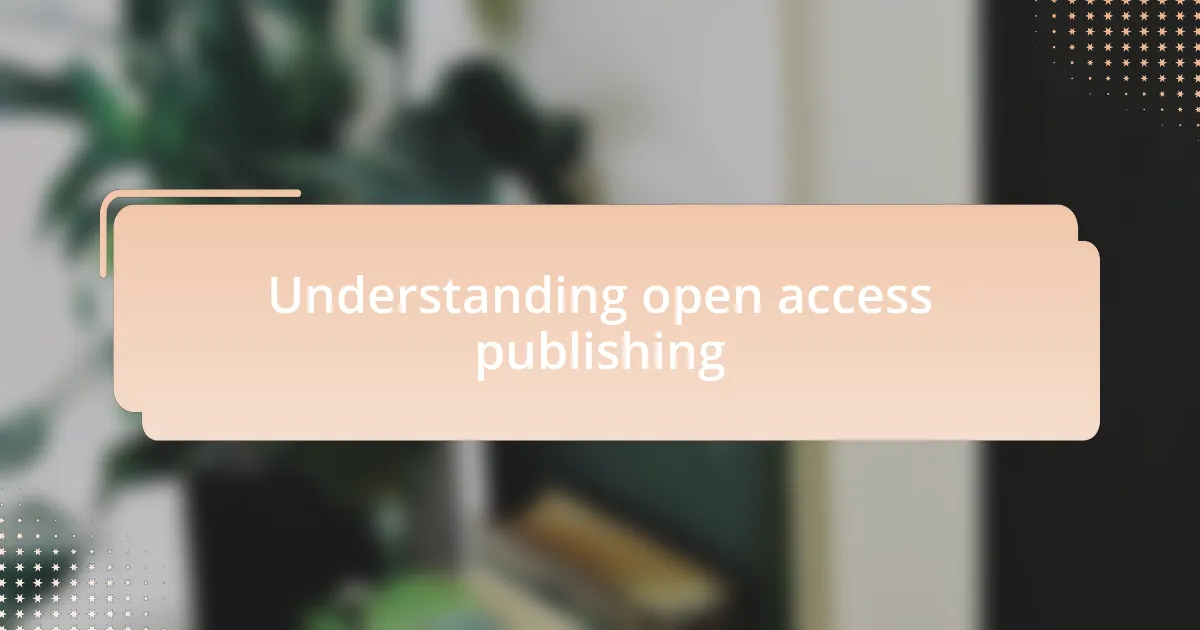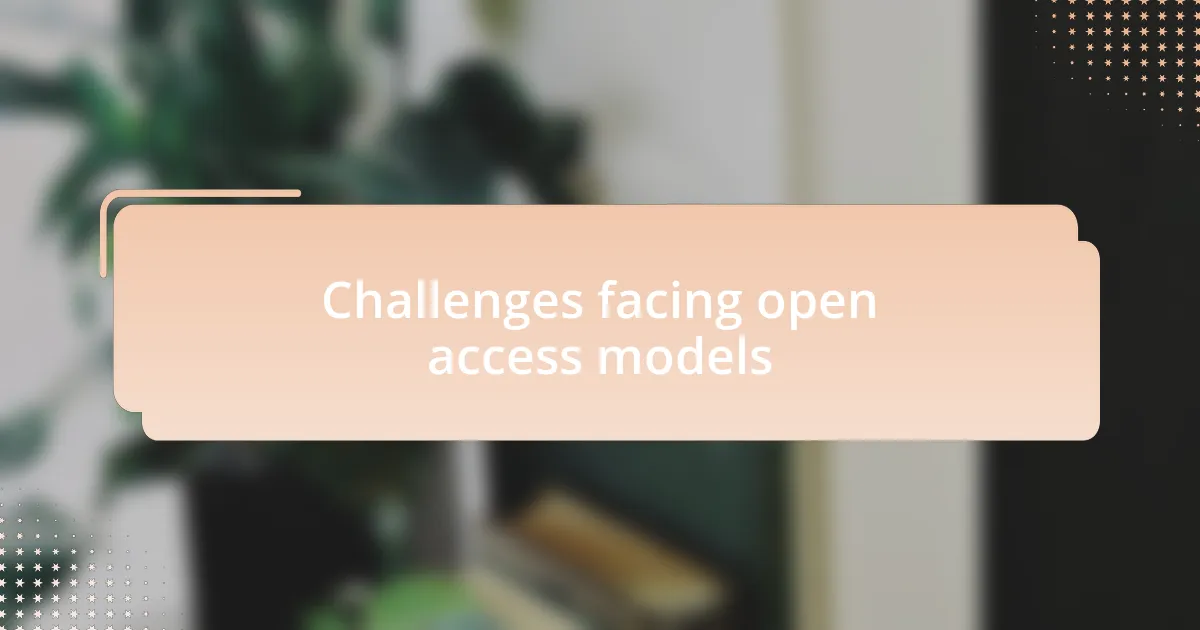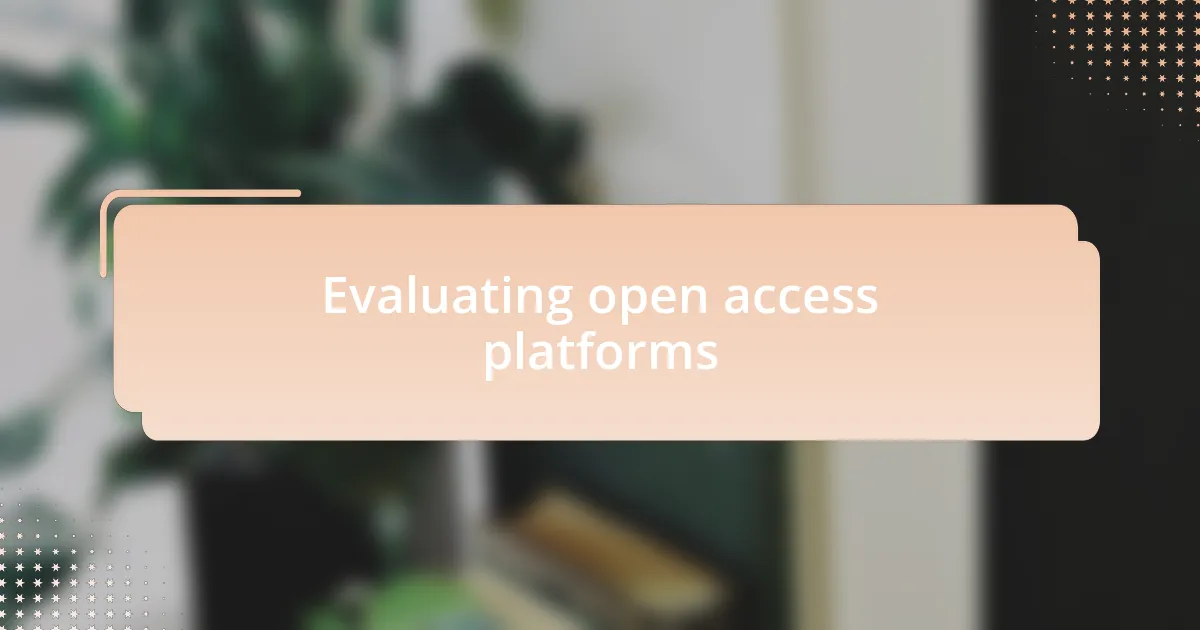Key takeaways:
- Open access publishing enhances accessibility to research, fostering collaboration between academia and the public.
- Financial sustainability and Article Processing Charges (APCs) present significant challenges for researchers and institutions in open access models.
- Quality control is a concern, as some open access journals prioritize fast publication over rigorous peer review.
- A platform’s reputation, transparency in review processes, and user experience are crucial for researchers selecting open access journals.

Understanding open access publishing
Open access publishing has fundamentally changed the way we think about access to research. I remember the first time I stumbled upon a freely available research article; I felt a rush of empowerment. How incredible is it that someone halfway across the world can access groundbreaking research without any paywall barriers? This accessibility fosters collaboration, not just within academia but also with the broader public.
The concept of open access revolves around making research freely available online, ensuring that anyone, regardless of their income or institutional affiliation, can read and build on this knowledge. It’s fascinating to me how this model challenges traditional academic publishing norms. I often wonder, might such accessibility lead to more informed decision-making in our society?
Many researchers advocate for open access because it increases visibility and citations for their work. I’ve seen firsthand how sharing articles openly can amplify a researcher’s impact. It’s exciting to realize that when we share our findings widely, we contribute to a pool of knowledge that can spark innovation and inspire others in ways we might never have imagined.

Challenges facing open access models
One significant challenge facing open access models is the financial sustainability of publishing. I remember discussing this with a colleague who expressed frustration over the so-called “Article Processing Charges” (APCs). These fees can be prohibitive for individual researchers or smaller institutions, potentially limiting who can publish their findings in an open format. Isn’t it disheartening to think that the cost of sharing knowledge could stifle innovative research?
Another hurdle is the quality control of open access journals. I’ve encountered instances where some journals prioritizing quick publication over thorough peer review may undermine the credibility of open access as a whole. It raises a valid question: how can we ensure that published studies maintain a rigorous standard when the pressure to publish quickly often overshadows the importance of quality?
Additionally, there’s the issue of visibility in a crowded market. I’ve observed how some valuable research gets lost among a flood of publications. With countless open access journals emerging, how do authors ensure their work reaches the right audience? This oversight can diminish the intended impact of their research, leading me to wonder whether more effective strategies for promoting open access content could bridge this gap.

Evaluating open access platforms
When evaluating open access platforms, it’s crucial to consider their reputation and impact factor. I remember a time when I submitted my research to a journal that seemed reputable but later learned it had little visibility or citation rate. This experience made me realize that not all open access outlets carry the same weight. How can a researcher choose wisely without getting caught up in the glossy promises of easy publication?
Another aspect worth examining is the transparency of the platform’s review processes. In my own experience, I’ve found that platforms with detailed submission guidelines and clear peer review criteria not only foster trust but also encourage a more meaningful dialogue about research quality. It begs the question: if a platform is vague about its processes, can we truly regard its published work as credible?
Lastly, let’s not overlook the user experience of these platforms. I once struggled with a site’s navigation while trying to access important articles. A cumbersome interface can discourage readers from engaging with research. Doesn’t it make sense that an accessible open access platform could amplify the audience and impact of significant findings? This connection highlights the need for solidarity between usability and academic rigor in the open access landscape.